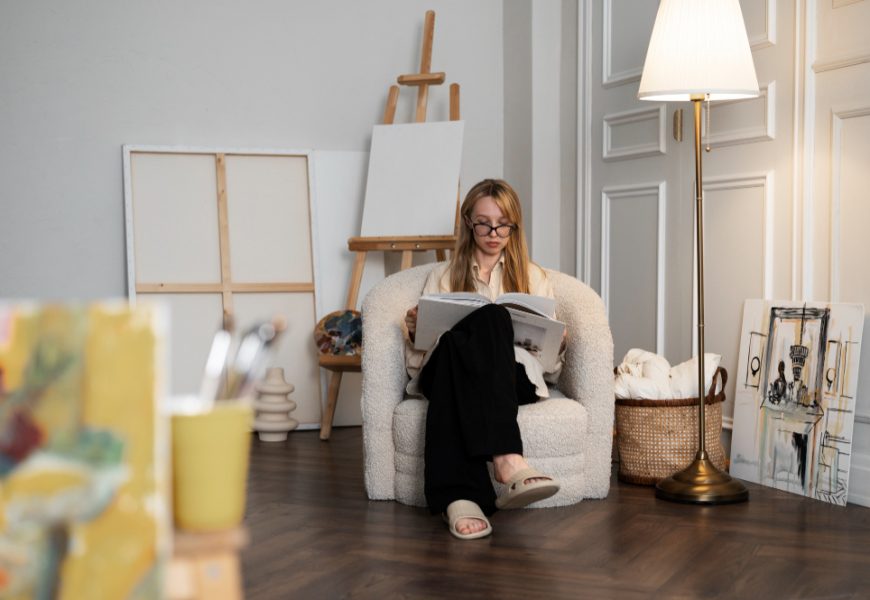Designing a home environment that encourages both creativity and focus is not about following rigid design rules or replicating a magazine-perfect workspace—it’s about creating a space that genuinely reflects who you are, supports the specific kind of work you do, and helps you access both your imaginative energy and your ability to stay on task. Our surroundings have a subtle yet powerful impact on our mental rhythm, attention span, and even the quality of ideas that rise to the surface. With thoughtful planning and a touch of self-awareness, you can turn even a small corner of your home into a creative haven and productivity booster.
Designing a Personalized Environment That Reflects Both Functionality and Inspiration
When you set out to establish a home space that truly supports your creativity and focus, the very first step is to recognize that there is no single formula. What works beautifully for one person might stifle another. This is why the process needs to begin with noticing your own patterns: Do you thrive in warmly decorated, cozy settings, or do you gain energy from clean, uncluttered simplicity? Do you feel more inspired in natural light, or do you prefer the muted glow of task lamps?
Your answers to these kinds of questions should guide every design choice. For example, if you know you generate your best ideas in an open, airy environment, you might want to arrange your desk near a window with curtains that allow abundant daylight. On the other hand, if you need calm and steadiness to drill down into detail-oriented tasks, you could benefit from a smaller, enclosed setup where distractions are kept to a minimum.
Personalization also extends to the materials and objects within your reach. Surrounding yourself with meaningful yet uncluttered motivators—like a vision board with a few key images or phrases, a favorite artwork that stirs unexpected ideas, or even a keepsake that grounds you in purpose—can act as subtle prompts for creativity. The key is that these elements should serve your mindset, not overwhelm it.
Ultimately, the goal is to make your workspace feel like an extension of your best self at work: adaptable, focused, and stimulating in just the right measure. If you approach the process with intention—seeing it as both functional planning and self-expression—you’ll find that your space begins to work with you rather than against you. It becomes not just a location to “do tasks” in but a supportive atmosphere that helps you shift naturally into states of focus, flow, and imaginative exploration.
Balancing Minimalism, Comfort, and Stimulus in the Layout of Your Workspace
Once you’ve defined the type of atmosphere that works best for you, the next step is designing the actual layout—and here the real art lies in striking balance. Three core elements need to be harmonized: minimalism, comfort, and stimulus. Each has value on its own, but an imbalance can tip your environment toward distraction or stagnation.
- Minimalism for clarity: A clutter-free environment reduces decision fatigue and keeps your attention on the tasks at hand. Too many objects, even if they’re beloved, can visually overwhelm you. The goal isn’t to live in a stark workspace, but to maintain a sense of order where you’re not constantly managing “stuff” instead of your ideas.
- Comfort for sustainability: A supportive chair, a desk at the proper height, and good lighting aren’t luxuries—they’re necessities. Physical discomfort will always undercut both focus and creativity. Layering in cozy but not distracting elements, such as a textured rug, a soft throw, or ergonomic desk accessories, makes the space humane and welcoming, encouraging you to spend time there.
- Stimulus for inspiration: While too much stimulation can disrupt concentration, the right kinds of sensory cues can enhance imagination. A houseplant can bring life and freshness to your desk. A carefully chosen scent—citrus for energy, lavender for calm—can subtly set the tone. Even background sounds, whether music or ambient noise, can create a soundscape that supports rather than interrupts your workflow.
One practical way to manage these three elements is to think in terms of zones and layers. Your primary work zone (the desk area) should be dedicated to essential tools only. From there, layer comfort elements around the main zone: a comfortable seat cushion, a lamp with warm adjustable lighting, a plant positioned off to the side. Then, add just one or two sources of inspiration within eye level—perhaps a framed photograph or an object with personal meaning. This keeps the space stimulating without being chaotic.
It’s also important to view this as a flexible, evolving process. What feels inspiring now may need refreshing later. Rearranging furniture, rotating in a different piece of artwork, or even changing the color accents can breathe new energy into your workspace as your goals and projects change. The point isn’t perfection—it’s ongoing alignment between your environment and your inner creative drive.
Final Thoughts
Creating a home space that inspires creativity and focus is ultimately about harmonizing self-knowledge with design choices. It requires recognizing your own preferences and challenges, then shaping your surroundings to encourage both imaginative thinking and disciplined follow-through. When minimalism keeps the space clear, comfort makes it sustainable, and the right stimuli add inspiration, you create an environment that fuels your best mental state day after day.
The most powerful workspaces are not necessarily visually impressive; they are deeply personal, functional, and quietly supportive. By approaching your home environment as both a practical tool and a canvas for expression, you empower yourself to cultivate not only productivity but also joy in the process of creating and working from home.









